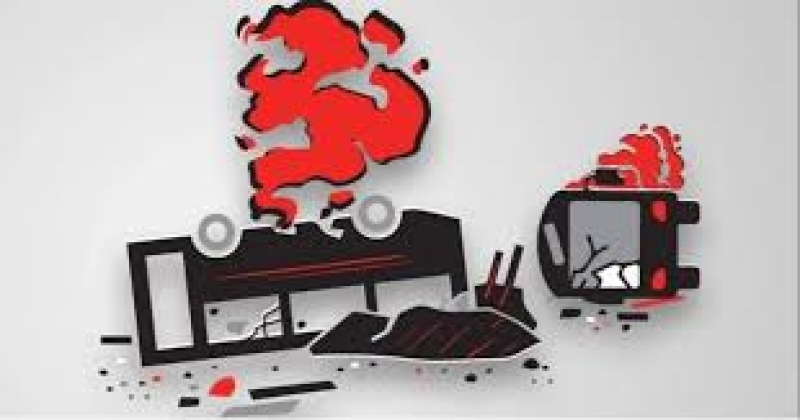- Dhaka’s Per Capita Income Rises to USD 5,163 |
- DSE turnover dips 18% despite weekly gains in key indices |
- 65 Nations Sign UN Treaty to Combat Cybercrime Globally |
- Dhaka’s air quality ‘unhealthy’ 5th worst in world Saturday |
- Dhaka’s air recorded unhealthy on Friday morning |
RSF identifies 314 accident-prone upazilas, 139 high-risk

The Road Safety Foundation (RSF) has identified 314 accident-prone upazilas, each falling under its respective police station across Bangladesh, categorizing 139 as highly accident-prone areas and 175 as accident-prone zones.
Within them, 21 upazilas are considered extremely high-risk, according to a report prepared by the RSF looking at the past five years (2020–2024).
RSF analyzed around 37,000 road accidents using both media reports and the foundation’s own data and examined accident types and severity to classify areas according to risk. The findings were released on Saturday.
The 21 high-risk areas include key urban and suburban regions such as Dhaka and Dhamrai in Dhaka district; Gazipur Sadar, Kaliakoir, and Shreepur in Gazipur; Kalihati in Tangail; Shibchar and Tekerhat in Madaripur; Bhanga in Faridpur; Ishwardi in Pabna; Sherpur in Bogura; Boroigram in Natore; Mirersarai, Potia, and Sitakunda in Chattogram; Chakaria in Cox’s Bazar; Damurhuda in Chuadanga; Gournadi in Barishal; Madhabpur in Habiganj; and Trishal and Valuka in Mymensingh.
They are included among the 139 upazilas that were classified as accident-prone. Dhaka Division alone has more than 30 upazilas, including Dhaka Sadar, Dhamrai, Savar, Keraniganj, Gazipur Sadar, Kaliakoir, Tangail Sadar, and Sonargaon in Narayanganj. Chattogram Division, Rajshahi, Khulna, Rangpur, Barishal, Mymensingh, and Sylhet divisions also have multiple upazilas listed among accident-prone zones.
The foundation noted several contributing factors. Poor road design and infrastructure, deteriorating road conditions, and inadequate road safety measures such as missing signs, lane markings, dividers, or warning boards contribute significantly. High-speed traffic without proper enforcement, reckless movement of mixed vehicle types on the same road, and driver inexperience at problematic spots further increase risks.
Besides, encroachment and unsafe practices by communities living along roads exacerbate the situation.
To mitigate accidents, the foundation recommended comprehensive corrective measures. Road design and infrastructure should be improved at accident-prone sites, and safety deficiencies addressed, including proper signage, lane markings, and dividers.
The use of technology to control vehicle speed is essential. Service lanes or dividers should separate different types of traffic. Authorities should prevent minors from operating motorcycles or other vehicles and raise awareness among local communities about safe road usage.
Law enforcement should monitor identified hotspots closely. Coordinated actions between local administrations, traffic police, and road safety authorities can reduce fatalities and injuries significantly.
Moving forward
The study underscores the urgent need for government intervention and public awareness campaigns to prevent accidents in Bangladesh. With the majority of fatal accidents concentrated in specific districts and upazilas, targeted infrastructure improvements and stricter traffic management could save hundreds of lives annually.
Experts stress that road safety is not only a matter of traffic regulation but also a broader social responsibility. Addressing infrastructure deficits, enforcing speed limits, and educating the public are key to reducing Bangladesh’s persistently high road accident rates.
The RSF hopes that by highlighting these 314 locations, authorities and communities will prioritize measures to make Bangladesh’s roads safer and reduce the human and economic costs of traffic accidents, reports UNB.

